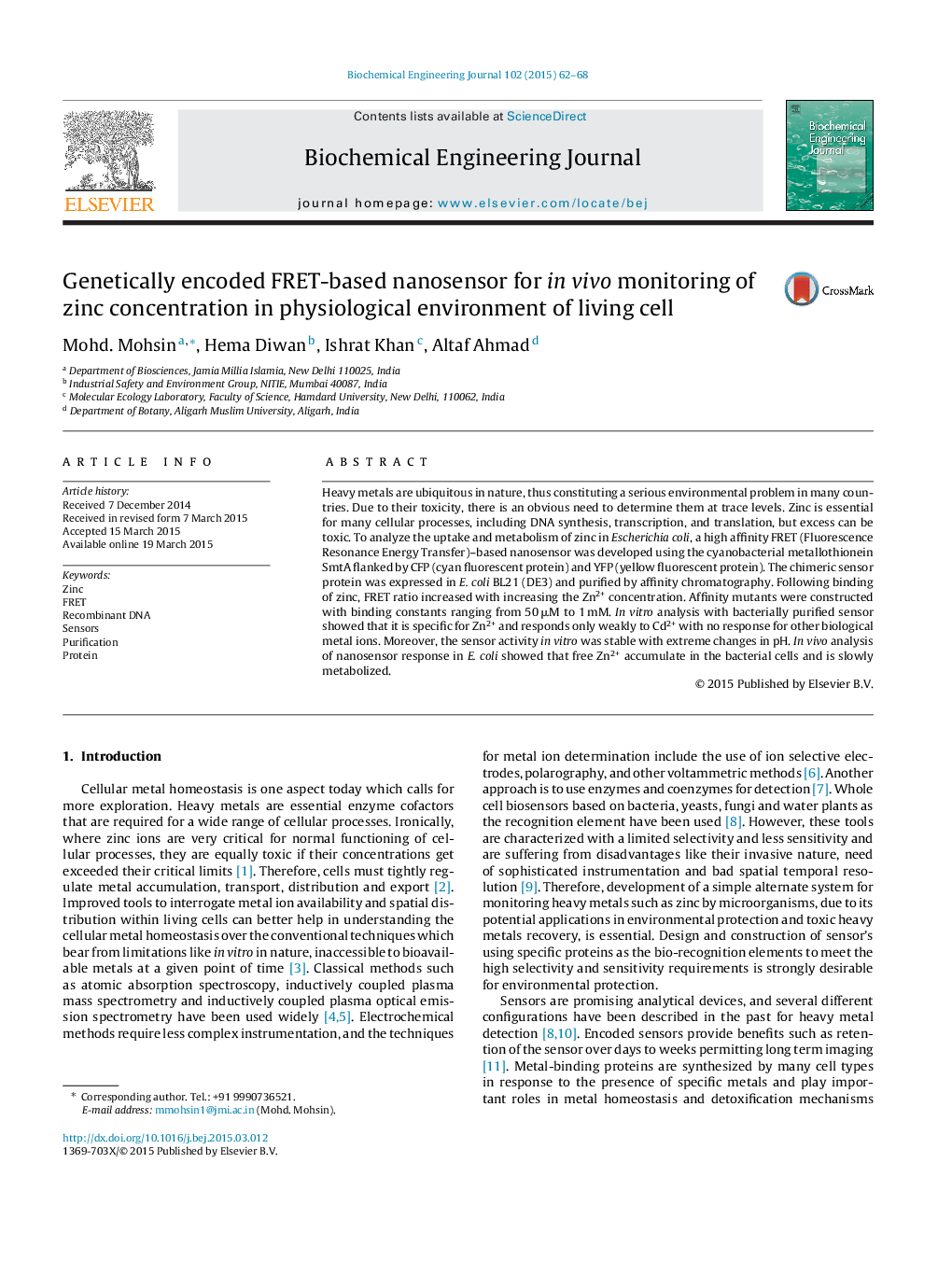| کد مقاله | کد نشریه | سال انتشار | مقاله انگلیسی | نسخه تمام متن |
|---|---|---|---|---|
| 2877 | 140 | 2015 | 7 صفحه PDF | دانلود رایگان |

• Genetically-encoded FRET-based nanosensor is designed and constructed for the measurement of heavy metal zinc.
• This nanosensor enables real-time monitoring of zinc ion flux at the cellular level in living cells.
• Monitoring of zinc level in bacteria is achieved non-invasively.
Heavy metals are ubiquitous in nature, thus constituting a serious environmental problem in many countries. Due to their toxicity, there is an obvious need to determine them at trace levels. Zinc is essential for many cellular processes, including DNA synthesis, transcription, and translation, but excess can be toxic. To analyze the uptake and metabolism of zinc in Escherichia coli, a high affinity FRET (Fluorescence Resonance Energy Transfer)–based nanosensor was developed using the cyanobacterial metallothionein SmtA flanked by CFP (cyan fluorescent protein) and YFP (yellow fluorescent protein). The chimeric sensor protein was expressed in E. coli BL21 (DE3) and purified by affinity chromatography. Following binding of zinc, FRET ratio increased with increasing the Zn2+ concentration. Affinity mutants were constructed with binding constants ranging from 50 μM to 1 mM. In vitro analysis with bacterially purified sensor showed that it is specific for Zn2+ and responds only weakly to Cd2+ with no response for other biological metal ions. Moreover, the sensor activity in vitro was stable with extreme changes in pH. In vivo analysis of nanosensor response in E. coli showed that free Zn2+ accumulate in the bacterial cells and is slowly metabolized.
Journal: Biochemical Engineering Journal - Volume 102, 15 October 2015, Pages 62–68